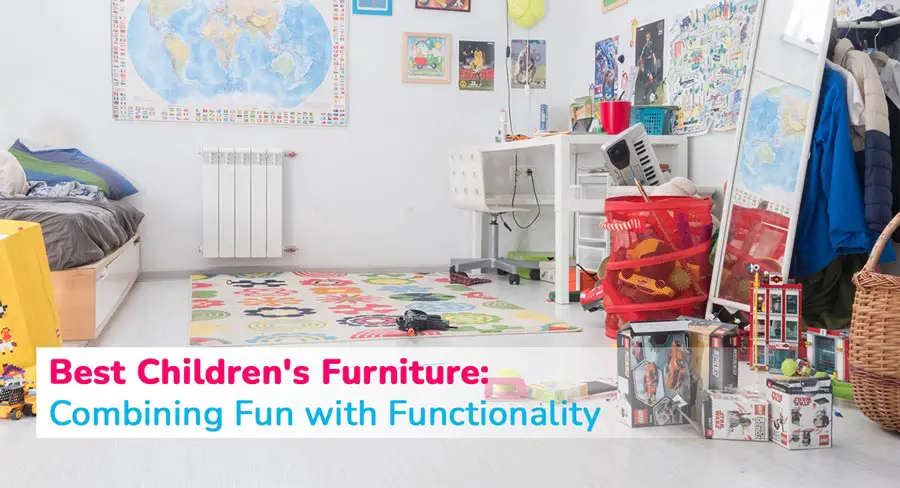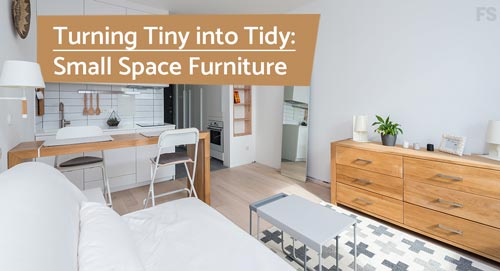Best Children's Furniture: Combining Fun with Functionality

Table of Contents
- Introduction
- Importance of Children's Furniture
- Factors to Consider When Choosing Children's Furniture
- Safety
- Durability
- Size and Scale
- Storage Solutions
- Comfort and Ergonomics
- Easy Maintenance
- Different Types of Children's Furniture
- Beds and Bunk Beds
- Desks and Study Areas
- Storage Furniture
- Seating Options
- Play and Activity Tables
- Decorative Accessories
- Age-Appropriate Furniture
- Infants and Toddlers (0-3 years)
- Preschoolers (3-5 years)
- School-Aged Children (6-12 years)
- Teenagers (13+ years)
- Design and Aesthetics in Children's Furniture
- Themes and Characters
- Color Palette
- Customization and Personalization
- Tips for Maximizing Functionality and Organization
- Multi-functional Furniture
- Utilizing Wall Space
- Incorporating Storage Solutions
- Creating Zones within a Room
- Promoting Order and Organization
- Budget Considerations
- Setting a Budget
- Assessing Longevity and Versatility
- Identify Must-Have and Nice-to-Have Items
- Prioritizing Quality and Safety
- Conclusion
Introduction
Children's furniture plays a crucial role in creating a safe and functional space for kids to grow, play, and learn. It combines fun and functionality to meet the unique needs of children at different stages of their development. This article will explore the importance of children's furniture, factors to consider when choosing it, different types available, age-appropriate options, design and aesthetics, tips for maximizing functionality and organization, as well as budget considerations.
Importance of Children's Furniture
Children's furniture is specifically designed to cater to the needs and safety of children. It is important for several reasons:
Safety: Children's furniture undergoes rigorous safety testing to ensure it meets specific safety standards. From rounded corners to non-toxic finishes, it prioritizes the well-being of children.
Durability: Children can be rough with their furniture, so durability is crucial. High-quality materials and sturdy construction ensure that furniture can withstand the wear and tear of active play.
Size and Scale: Children's furniture is designed with smaller proportions in mind to ensure a comfortable and ergonomic fit for children. It is important for promoting good posture and preventing strain or injury.
Storage Solutions: Children have a lot of belongings, from toys to clothes, and storage solutions help keep everything organized and within reach. Furniture with built-in storage compartments can save space and encourage tidiness.
Comfort and Ergonomics: Children spend a significant amount of time using furniture, whether it's studying at a desk or sleeping in a bed. Comfortable seating and proper ergonomics promote a healthy and enjoyable experience.
Easy Maintenance: Children can be messy, which is why easy-to-clean materials like wipeable finishes are important for children's furniture. This ensures that spills or accidents can be quickly and easily cleaned up.
Factors to Consider When Choosing Children's Furniture
When selecting children's furniture, there are several important factors to consider:
Safety: Look for furniture that meets safety standards and has features like rounded corners, non-toxic finishes, and sturdy construction.
Durability: Consider the materials and construction of the furniture to ensure it can withstand the wear and tear of active play.
Size and Scale: Ensure that the furniture is appropriately sized for your child's age and height to promote comfort and good posture.
Storage Solutions: Assess the storage needs of your child and look for furniture with built-in storage compartments or shelves.
Comfort and Ergonomics: Test the furniture for comfort and proper ergonomics, especially when it comes to seating options and study areas.
Easy Maintenance: Opt for furniture with easy-to-clean materials that can withstand spills and accidents.
Different Types of Children's Furniture
Children's furniture encompasses a variety of options to fit different needs and preferences:
Beds and Bunk Beds: From cribs for infants to bunk beds for siblings, there are various bed options available to accommodate different ages and room sizes.
Desks and Study Areas: A dedicated workspace is important for school-aged children and teenagers. Look for desks and study areas that provide ample space for studying and organizing school supplies.
Storage Furniture: Bookshelves, dressers, and toy chests are essential for keeping a child's room neat and organized.
Seating Options: Comfy chairs, bean bags, and ottomans provide comfortable seating for reading or relaxation.
Play and Activity Tables: These tables offer a dedicated space for creative play, puzzles, and arts and crafts.
Decorative Accessories: Add character and personality to a child's room with decorative pieces like wall decals, curtains, and themed bedding.
Age-Appropriate Furniture
Age-appropriate furniture takes into consideration the specific needs of children at different stages of their development:
Infants and Toddlers (0-3 years): Cribs, changing tables, and rocking chairs are essential for the early years. Look for furniture that promotes safety, comfort, and accessibility.
Preschoolers (3-5 years): As children enter their preschool years, they may need a toddler bed or a twin bed. A combination of storage furniture, play tables, and seating options can support their growing independence and play needs.
School-Aged Children (6-12 years): At this stage, children may benefit from a larger bed, a fully-equipped study area, and ample storage for school supplies, books, and toys.
Teenagers (13+ years): Teenagers require more privacy and a space that reflects their individuality. Invest in a comfortable bed, a spacious desk, and storage solutions that can accommodate their changing needs.
Design and Aesthetics in Children's Furniture
Design and aesthetics play an important role in creating a space that children love and feel connected to:
Themes and Characters: Consider incorporating themes or characters that resonate with your child's interests. From princesses to superheroes, themed furniture can create a magical and personalized space.
Color Palette: Choose a color palette that is visually appealing and promotes a positive and uplifting atmosphere. Bright colors can stimulate creativity, while softer tones can create a calming environment.
Customization and Personalization: Look for furniture that allows for customization and personalization, such as beds with built-in playhouses or desks with interchangeable accessories. This adds a personal touch and encourages creativity.
Tips for Maximizing Functionality and Organization
Maximize the functionality and organization of a child's space with these practical tips:
Multi-functional Furniture: Choose furniture that serves multiple purposes, such as a bunk bed with built-in storage or a desk with drawers.
Utilizing Wall Space: Install shelves or wall organizers to free up floor space and create additional storage options.
Incorporating Storage Solutions: Opt for furniture with built-in storage compartments or invest in separate storage units like toy chests and bookshelves.
Creating Zones within a Room: Create separate zones for different activities like sleeping, playing, and studying. This helps with organization and defining the purpose of each area.
Promoting Order and Organization: Teach and encourage your child to maintain an organized space by providing storage solutions that are easy to use and accessible.
Budget Considerations
When choosing children's furniture, it's important to consider budget limitations without compromising on quality and safety:
Setting a Budget: Determine how much you are willing to spend on children's furniture and stick to it.
Assessing Longevity and Versatility: Consider whether the furniture can grow with your child or be repurposed in the future. This helps maximize the value and longevity of your investment.
Identify Must-Have and Nice-to-Have Items: Prioritize essential items like a bed and desk, and consider other items as optional extras.
Prioritizing Quality and Safety: Invest in high-quality furniture that meets safety standards, even if it means spending a little more. Safety should never be compromised.
Conclusion
Children's furniture combines fun and functionality to create a safe and enjoyable space for kids. By considering factors like safety, durability, size, storage solutions, comfort, and ease of maintenance, parents can choose furniture that meets their child's needs. Age-appropriate options, design and aesthetics, maximizing functionality and organization, and budget considerations all contribute to creating a well-designed and functional space that children will love. So, invest wisely in the best children's furniture to provide the ultimate combination of fun and functionality.


